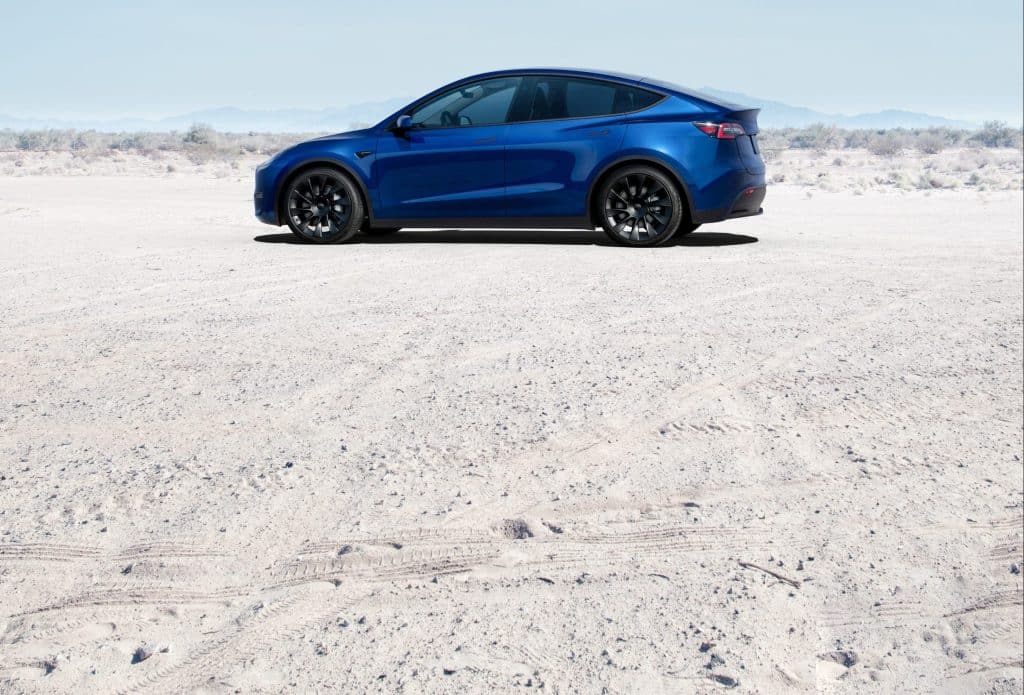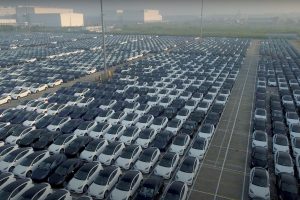The Tesla Model Y complete lineup was recently added to the IRS list of qualifying vehicles that will give buyers a $7,500 tax credit. While it may seem like the company’s huge price cuts coupled with the tax credit would be good for everyone, it spells bad news for competitors that offer comparable EVs in the same category.
On Friday, the Model Y’s entire lineup was added to the list of qualifying vehicles after the U.S. Department of Treasury said, “The change will allow crossover vehicles that share similar features to be treated consistently.” The Model Y’s five-seat configurations did not reach the weight requirement to be considered SUVs and were put in another category that included “All Other Vehicles.” The price limit to qualify for the tax credit differs by $25,000: $55,000 for All Others, and $80,000 for SUVs.
The inclusion is obviously a good thing for consumers, and events that transpired afterward are good for the investors. With Tesla’s $13,000 price cut on Model Y configurations in early January, the automaker had quadrupled the vehicle’s addressable market. At the same time, it had offered a substantial discount to some who could already justify the purchase, and if they were on the fence, there’s no denying that this inevitably won them over.
Lower prices mean more sales. The Model Y was already making waves in terms of Tesla’s total concentration of sales by model, and it has routinely competed with the Model 3 in various markets and won in many of them. However, the cuts meant Tesla would have to eat some of its margins, which were incredibly high, trailing only Ferrari and BMW in that category. Analysts and more hellbent investors who are obsessed with the company making as much money as possible may not have loved the price cuts, and Tesla obviously will not be making as much of a profit per vehicle. However, on Saturday, following the Model Y’s inclusion to the qualifying vehicles list, Tesla bumped up prices by $1,500.
Is it the $13,000 the automaker trimmed in January? No, absolutely not. But Tesla is already making considerable money on each unit, and the company’s industry-leading tech and Supercharging network are inevitably what will win consumers over, especially as the vehicle is still vastly more affordable than before. With Tesla reaching 1.313 million deliveries last year in 2022, the company has pulled out all the stops to get sales figures off to a fast start in 2023, with various discounts and other programs to push vehicles out the door.

The old saying goes that one’s trash is another’s treasure, and in this instance, the competition is getting the trash while consumers are getting the treasure. Tesla’s massive price cuts and now qualifying tax credits make it a pretty simple choice for consumers. Without a doubt, one of the biggest issues with EV ownership, or at least in the broad consensus of the average consumer, is “Where will I charge my EV?” While this question still makes me chuckle to myself and want to say, “That thing you live in can do it. You know? Your house?” It’s much more complex than that.
A charging network is really what sets Tesla apart from the others. Some consumers may have been willing to spend a little extra to have the confidence that they could be surrounded by charging options, and Tesla is really the only automaker that has such broad options in terms of charging that it really doesn’t have a current competitor. If Tesla does end up opening up its network to other EVs, then this conversation changes. Of course, other companies out there have a robust infrastructure that is quickly growing. Still, these companies are often plagued by maintenance issues, rising costs, and a less-than-desirable experience.
Tesla is already controlling a majority of the U.S. market for electric vehicles, and there are worthy competitors. Volkswagen, Ford, and General Motors all have a wide variety of strategies in their plans to dethrone Tesla. Meanwhile, Polestar, Rivian, Lucid, and other startups are still working through their issues, which are usually money-related.
Tesla is well ahead of the curve, especially as it has already figured out mass production and launched a lineup of competitive vehicles with plans of more styles and applications to come. The inclusion of the Model Y, which CEO Elon Musk believes will be the best-selling car in the world one day, to the tax credit program only spells disaster for the companies attempting to catch up. Meanwhile, Tesla sits comfortably in the driver’s seat, and there does not seem to be any true comparison in current sight.





